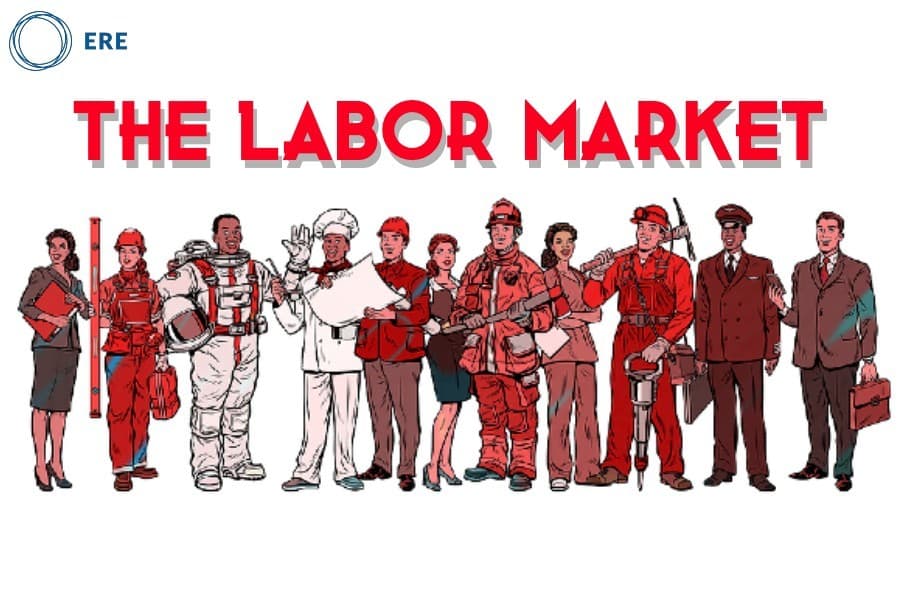Immigrants make up about 17%of the U.S. labor force, or 28 million workers. Over the last decade, they have become the main driver of growth of the labor force, accounting for over 80% of the growth since 2010. What’s more, current projections suggest that all growth of the labor force over the next 15 years will come from immigrants.
A Growing Crisis
Pre-Covid, the labor force was only growing at a rate of 0.5%, mirroring the growth of the population. Post-Covid, things got worse as the labor force has now shrunk by about 2%.
But Covid is only the most recent headwind that the labor market is facing. Other factors that are constraining the growth of the labor force include an aging population, falling labor force participation rates, and slow productivity growth.
Meanwhile, the pandemic has also contributed lower life expectancy and accelerating retirement rates. Add to that the low numbers of professionals with STEM skills and a dearth of blue-collar workers and it’s clear that we have major labor challenges ahead.
Immigrants and the Economy
Immigrants can help mitigate the worst consequences of the problems mentioned above. For starters, they can help fill some of the gap left by retiring baby boomers and slowing population growth. Immigrants also tend to be of prime working age (25 to 64 years) and have higher labor force participation rates (4% more) compared to the native-born population.
Immigrants are also less likely to be unemployed and are more likely to be self-employed and to start businesses. Plus, they’re over-represented in STEM fields and consequently make large contributions to innovation and invention.
There’s more. Immigrants tend to be at the extremes of the skill distribution and not in the middle: 55% work in low-skilled occupations (compared to 46% of native-born workers) and 28% are in high-skilled positions (compared to 34% of native-born workers). They are concentrated in manual labor jobs, such as nannies, health aides, landscapers, and cooks. Immigrants also make up 73% of the agricultural labor force.
On the high-skill end, immigrants are concentrated in STEM and health-care jobs. They are almost as likely as native-born workers to have a bachelor’s degree or higher (39% vs. 41%), but also four times as likely to lack a high-school education (16% vs. 4%). Additionally, recent immigrants (those who entered the country since 2014) are more educated — 48% hold bachelor’s degrees or higher.
What does this mean in terms of the labor market? The fastest growing categories of jobs include management; health-care practitioners (nurses) and support (home health and personal care aides); technical (software developers, data scientists); personal and service. These are also the categories where the demand for workers is far greater than the supply. That is likely why immigrants are disproportionately filling them and may continue to do so.
Where Do We Go From Here?
U.S. immigration policy favors family unification over all other categories, which does little to increase the labor force. Typically half of all legal immigrants in any year are immediate relatives of U.S. citizens, compared to about 15 percent who come in under employment-based preferences.
The Biden Administration is attempting to change that. A bill sent to Congress makes it easier for graduates of U.S. universities with advanced STEM degrees to stay in the country, improves access to green cards for workers in lower-wage sectors, and proposes to adjust the number of green cards issued based on economic conditions. If enacted, the law could triple the number of immigrants admitted under employment-based preferences to about 400,000 annually.
There’s no denying that a future with fewer immigrants is a future with less economic growth. As the pandemic ends, economic growth is expected to surge to about 5.5% this year, and then drop to about 1.5% after five years. The average for the decade is projected to be about 2% annually.
Given the number of factors that will constrain growth, immigration can be a powerful force that works in the opposite direction. Without new immigrants, the labor force will start shrinking as the population ages. Automation may make up the difference, but the timing of that is uncertain. Public attitudes towards immigration are mixed, with the majority (64%) supporting keeping immigration at present levels or decreasing it. The consequences — good or bad — of policy choices made as a result will be felt for decades.
